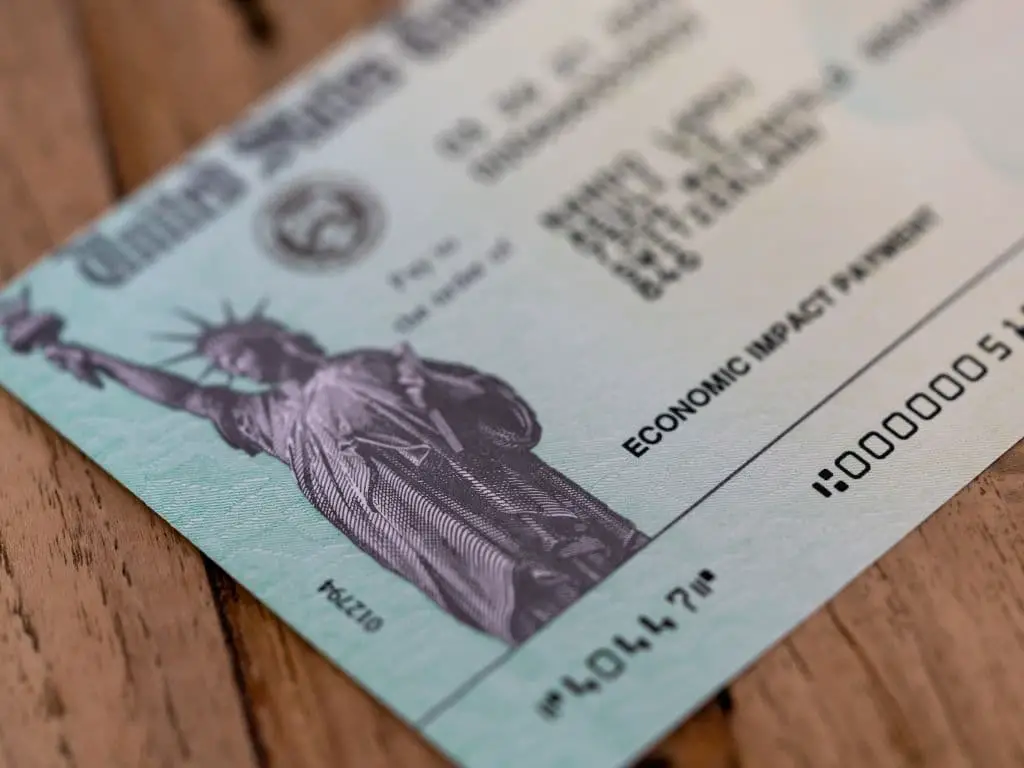There is a lot of confusion surrounding the taxation of economic impact payments.
It’s hard to know what is and isn’t taxable, especially when it comes to payments from the government.
Are Economic Impact Payments Taxable? As per the IRS, Economic Impact Payments are not taxable income. When taxpayers file their 2020 tax return next year, the payment will not reduce their refund or raise the amount they owe. Economic Impact Payments will also have no impact on a taxpayer’s eligibility for federal government aid or benefits programs.

We’re here to help clear things up. In this article, we will answer the question, “Are economic impact payments taxable?” and provide you with all the information you need to make an informed decision.
Are Economic Impact Payments Taxable?
The Coronavirus Aid Relief, Economic Security (CARES) Act established a framework for disaster aid payments through the U.S. Department of Housing and Urban Development (HUD). The act also establishes funds to compensate people who have been forced to leave their homes or businesses due to an epidemic, as well as provide immediate assistance. Payments are one
The payments are a one-time advance on an anticipated credit for 2020 (which you will file taxes for in 2021). The amount of someone’s tax refund the following year will not be altered whether he or she receives the payment.
If they satisfy the conditions, they will still be eligible for a refund. Payments are taxable-free income that isn’t reimbursed.
Eligibility Criteria for Economic Impact Payments
There are four major criteria for receiving Economic Impact Payments:
1. The Income: The grant does not require a specific financial threshold. The maximum payment for the 2019 tax year is $6,187. Households with AGI up to $75,000 for individuals or up to $150,000 if married filing jointly will get the full amount.
2. Taxpayer Identification Number (TIN): A Social Security number is required for at least one tax filer (SSN). If a married couple files jointly and one spouse has an SSN while the other has an Individual Taxpayer Identification Number (ITIN), the spouse with an SSN and any children with SSNs or an Adoption Taxpayer Identification Number (ATIN) are eligible for $500 per kid.
3. Dependency: If someone is classified as dependent on a tax return, they are not eligible to receive a payment for themselves. To qualify for the premium, children must be under the age of 17.
4. Citizenship or Residency: You must be a United States citizen, permanent resident, or resident alien.
The IRS does not consider stimulus payments under the Coronavirus Aid, Relief, and Economic Security Act (CARES Act), the 2021 Coronavirus Response and Relief Supplemental Appropriations Act (CRRSAA, Section 314 of the Consolidated Appropriations Act, 2021), or the American Rescue Plan Act of 2021 to be taxable income.
The IRS uses information on Form SSA-1099 or Form RRB-1099 to compute economic impact payments to recipients of benefits reflected in the Forms SSA-1099 and RRB-1099 who are not required to file a tax return and did not do so for 2018 or 2019.
It also includes pensioners who are not required to file a tax return, such as elderly persons and Social Security beneficiaries.
Since the IRS would not have any information regarding any dependents for these individuals, each person would receive $1,200 per person without the extra allowance for any dependents at this time.
Calculating Taxes On Economic Impact Payments
Economic impact checks are not included in taxable income. They are advanced payments for the new recovery rebate tax credit. Taxpayers would not reduce their refund or owe additional taxes if they receive the payment. However, the IRS has announced that it will use the information on Form SSA-1099 or RRB-1099 to compute economic impact payments to recipients of benefits reflected in the Forms SSA-1099 and RRB-1099 who are not required to file a tax return and did not do so for 2018 or 2019.
The IRS uses the following to compute economic impact payments:
Individuals who meet the eligibility requirements will receive an Economic Impact Payment of $1,200, or $2,400 if married filing jointly, and have an adjusted gross income (AGI) up to:
- If you’re filing as a single or married filing separately, the maximum yearly personal income tax rate is $75,000.
- $112,500 if you are filing as the head of your household and
- $150,000 if you are married and filing jointly
The excess of a person’s AGI above the relevant threshold is reduced by 5% of the difference.
Qualified people will obtain a reduced amount if their AGI is more than:
- If you’re single or married filing separately, your full refund is $75,000.
- $112,500 if you are filing as head of household and
If you’re married, $150,000 if you file jointly
For people who are eligible but with no qualifying children, the payment will be reduced to $0 but the AGI should be at least:
- $99,000 if you are filing as single or married filing separately
- $136,500 if you are filing as head of household and
- $198,000 if you are filing married filing jointly
The total-phaseout amounts for married couples and individuals with qualifying children are increased by $10,000 for each qualifying child.
Most taxpayers will receive an IRS payment automatically using their 2019 or 2018 tax return information, according to the IRS.
Individuals eligible for Social Security retirement, survivor, or disability benefits (SSDI), Railroad Retirement benefits, Supplemental Security Income (SSI), and VA Compensation and Pension (C&P) benefits who do not file a tax return for the current tax year will be sent $1,200 automatic payments from the IRS.
Conclusion
The IRS, as per the website has clarified that this payment is not taxable income. When taxpayers file their 2020 tax return next year, the payment will not reduce their refund or raise the amount they owe. Payment will also have no impact on a taxpayer’s eligibility for federal government aid or benefits programs.